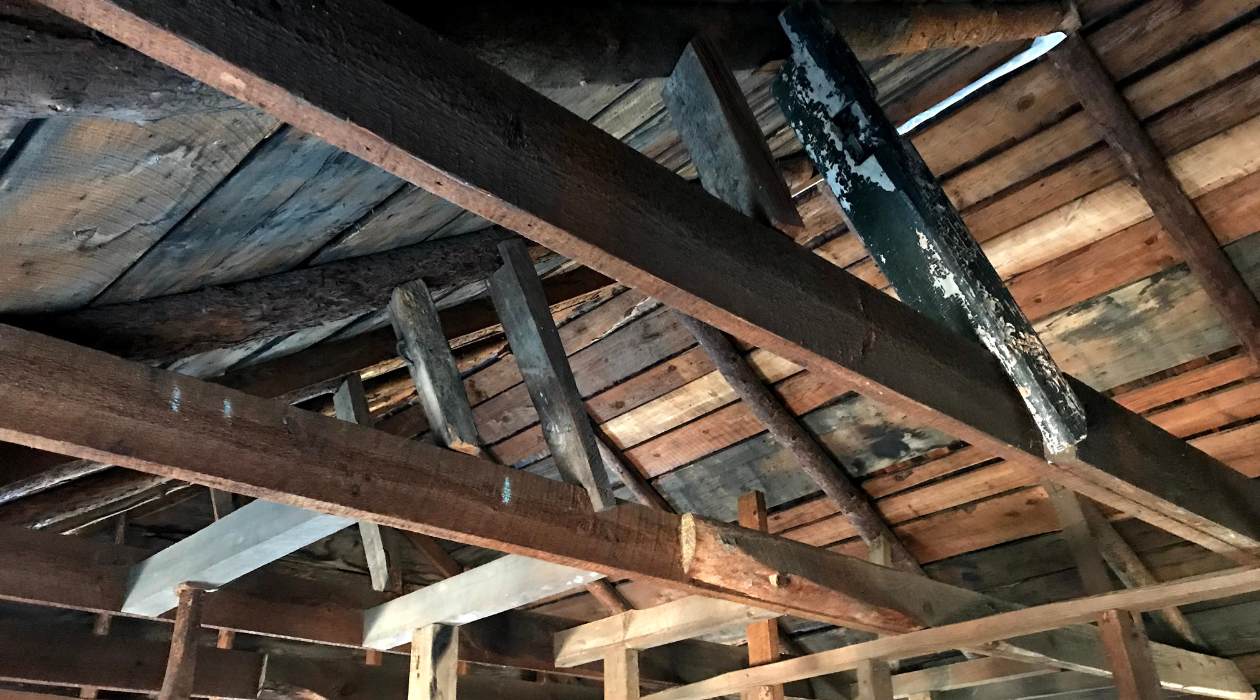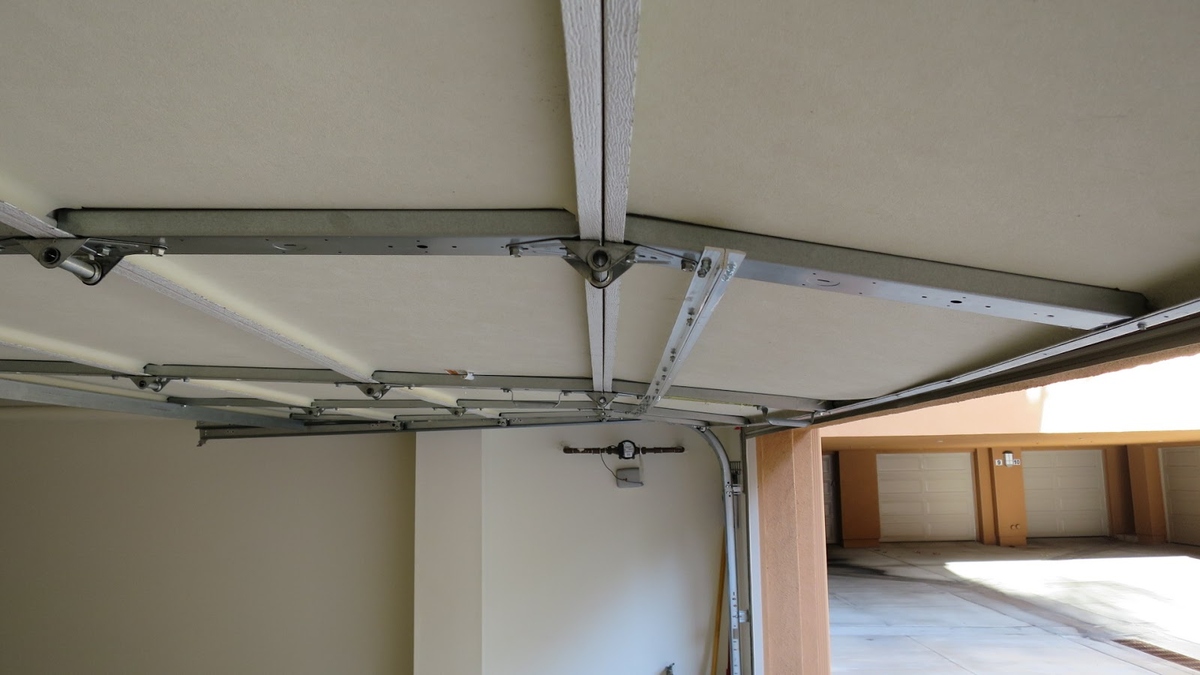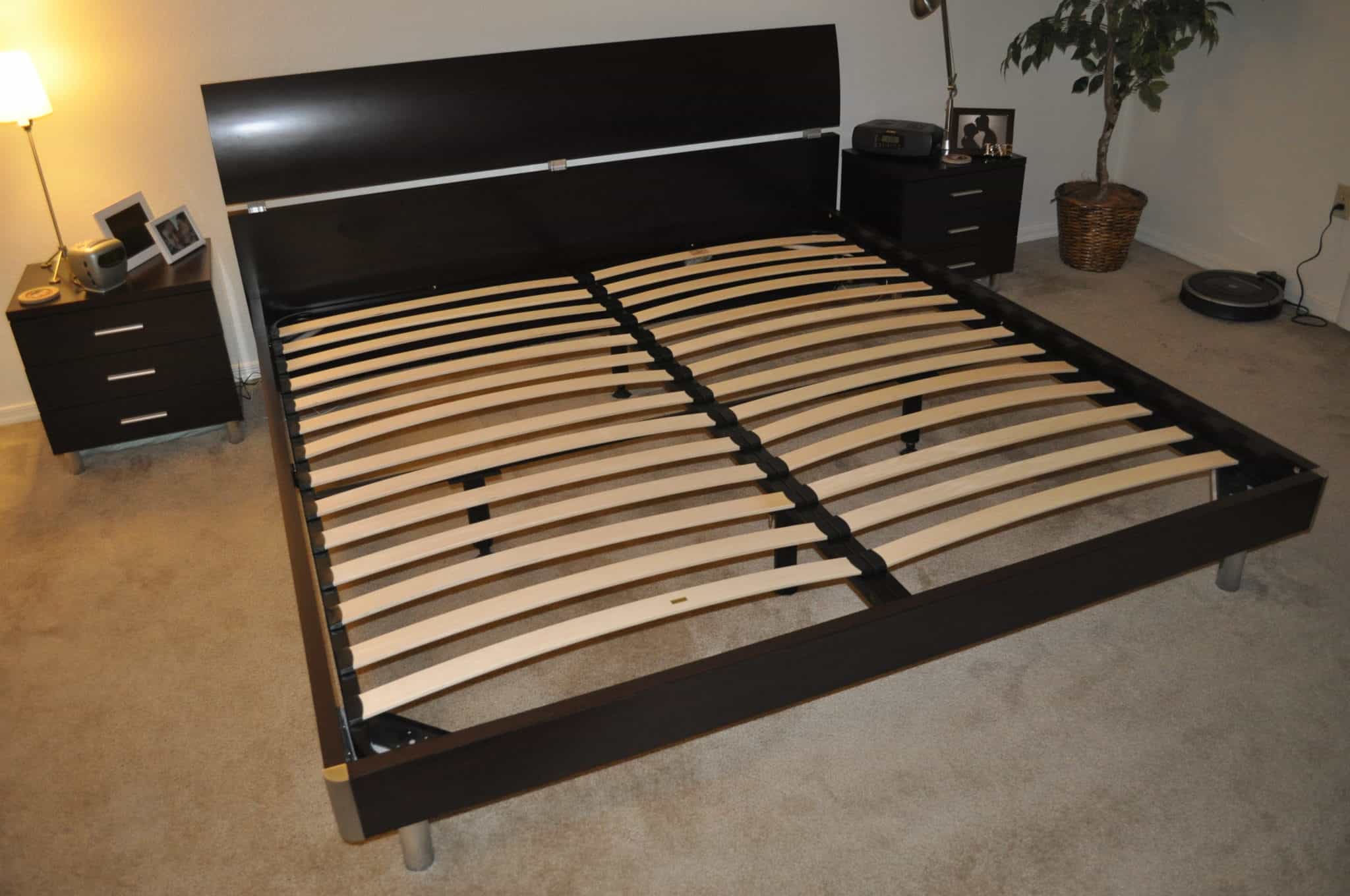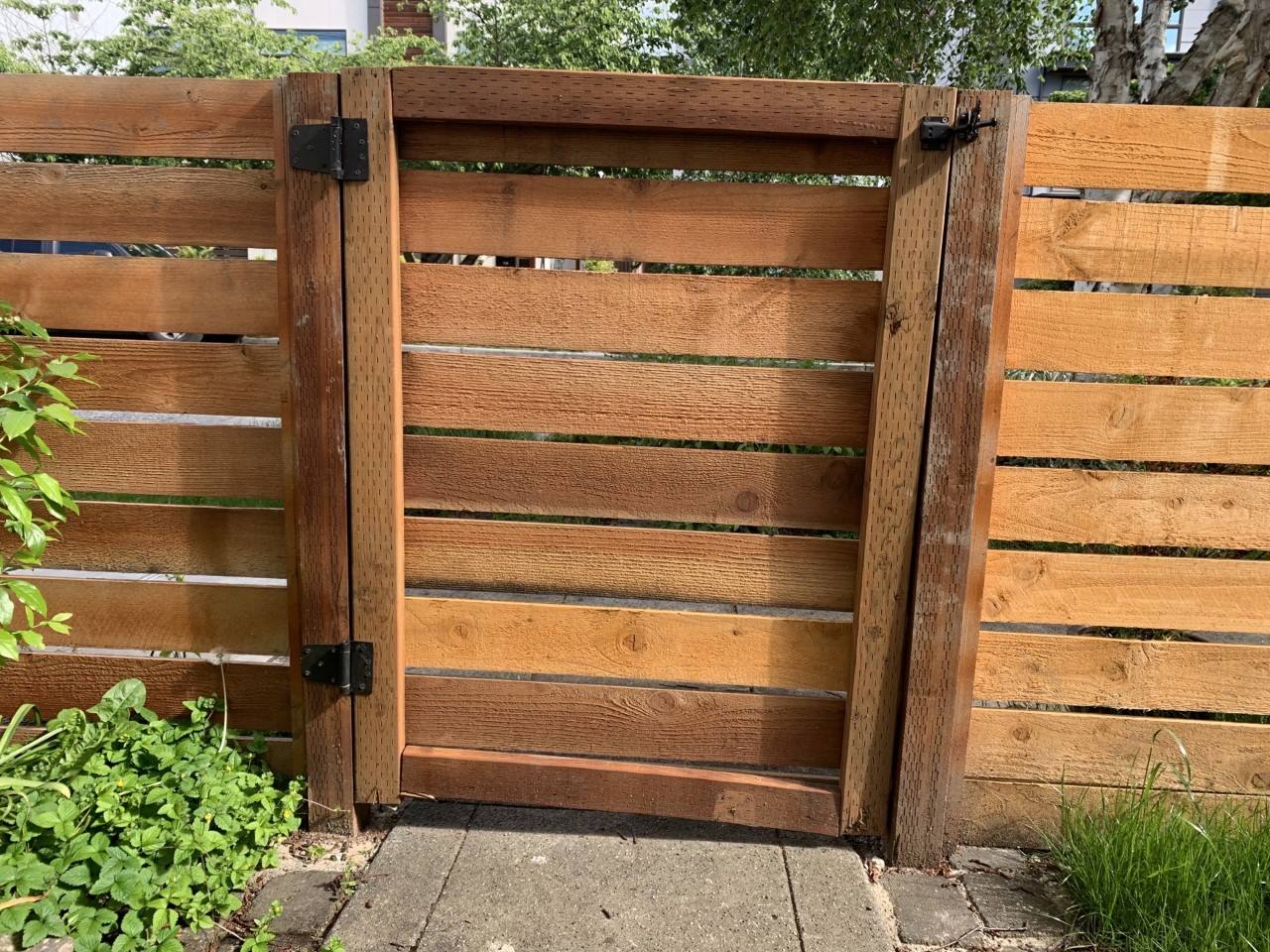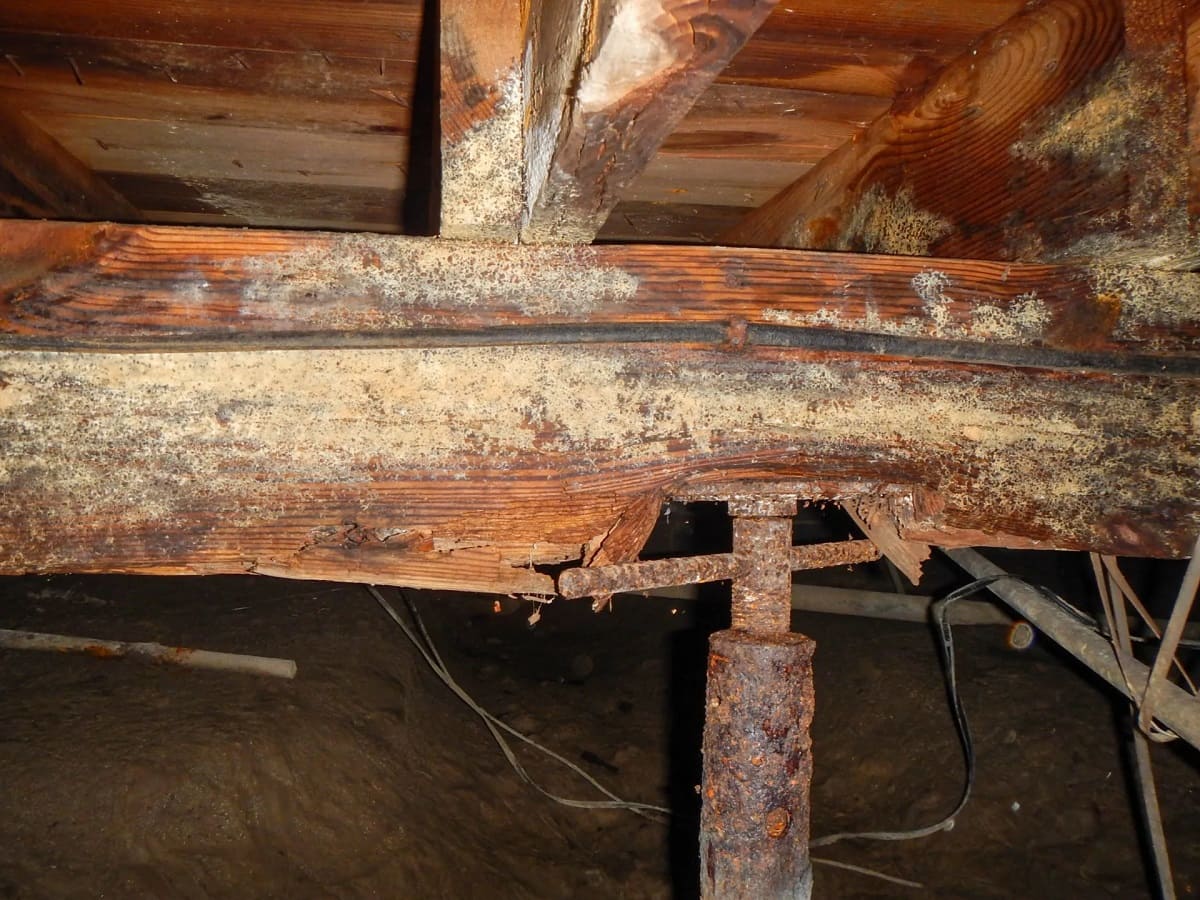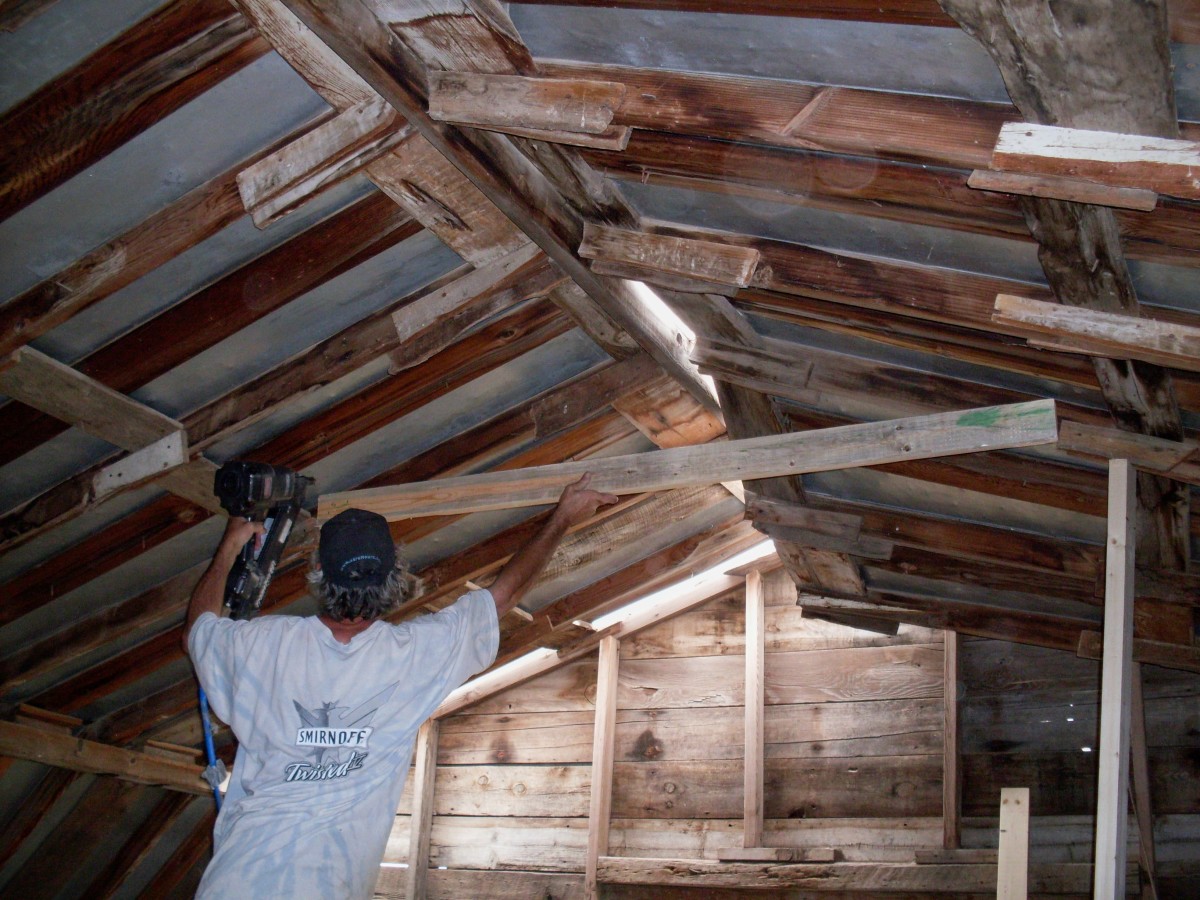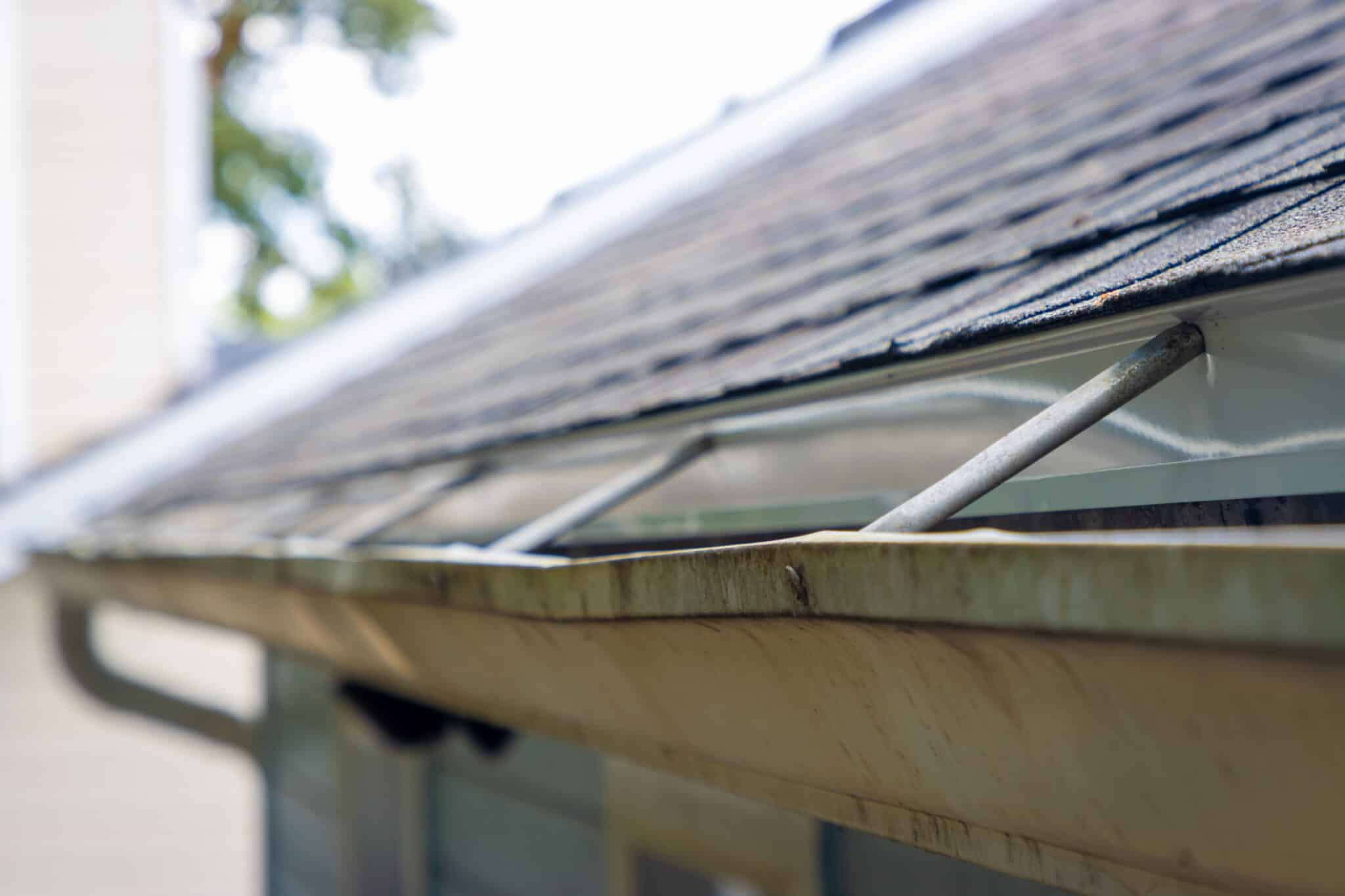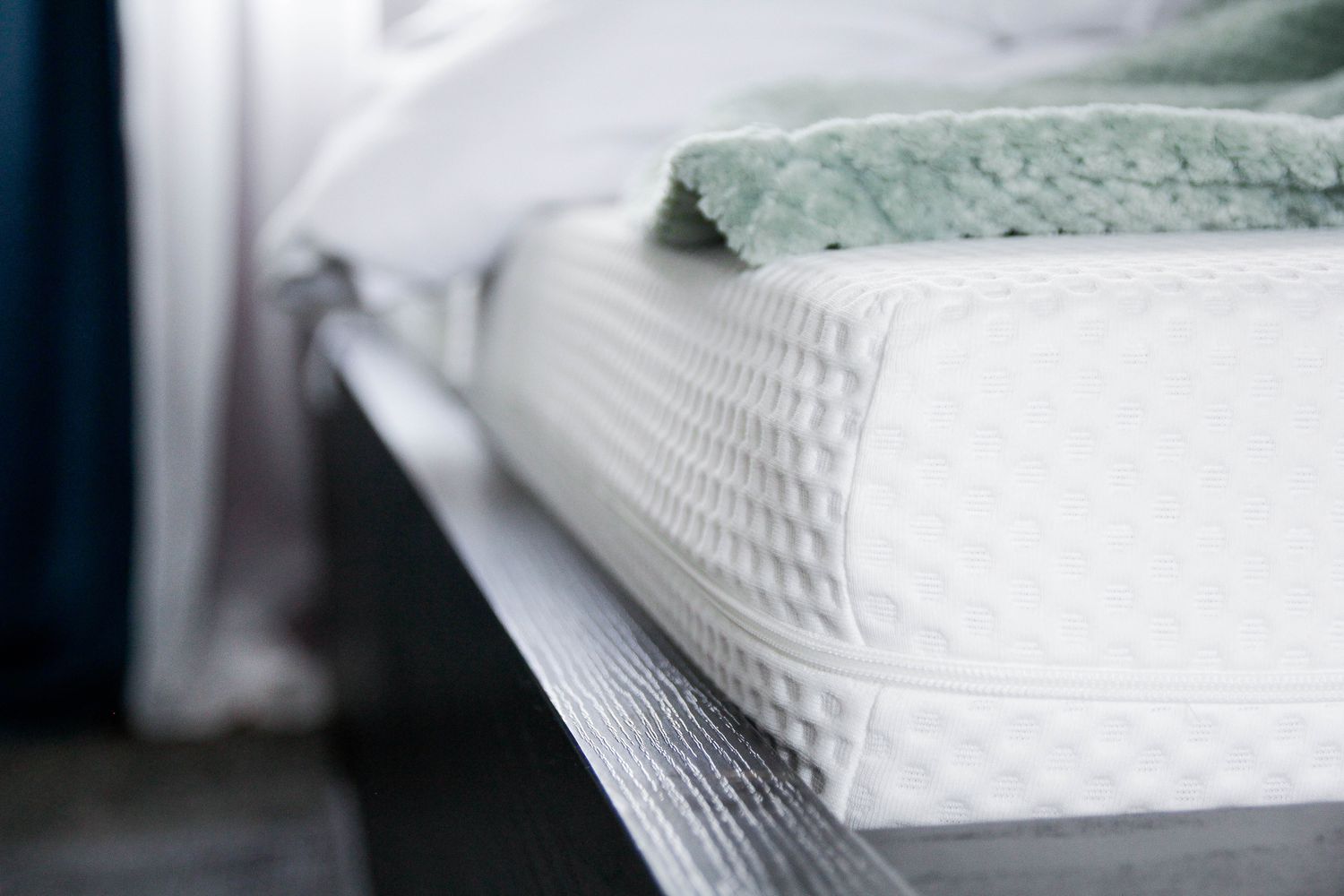Home>Furniture>Bedroom Furniture>How To Fix Sagging Mattress In The Middle
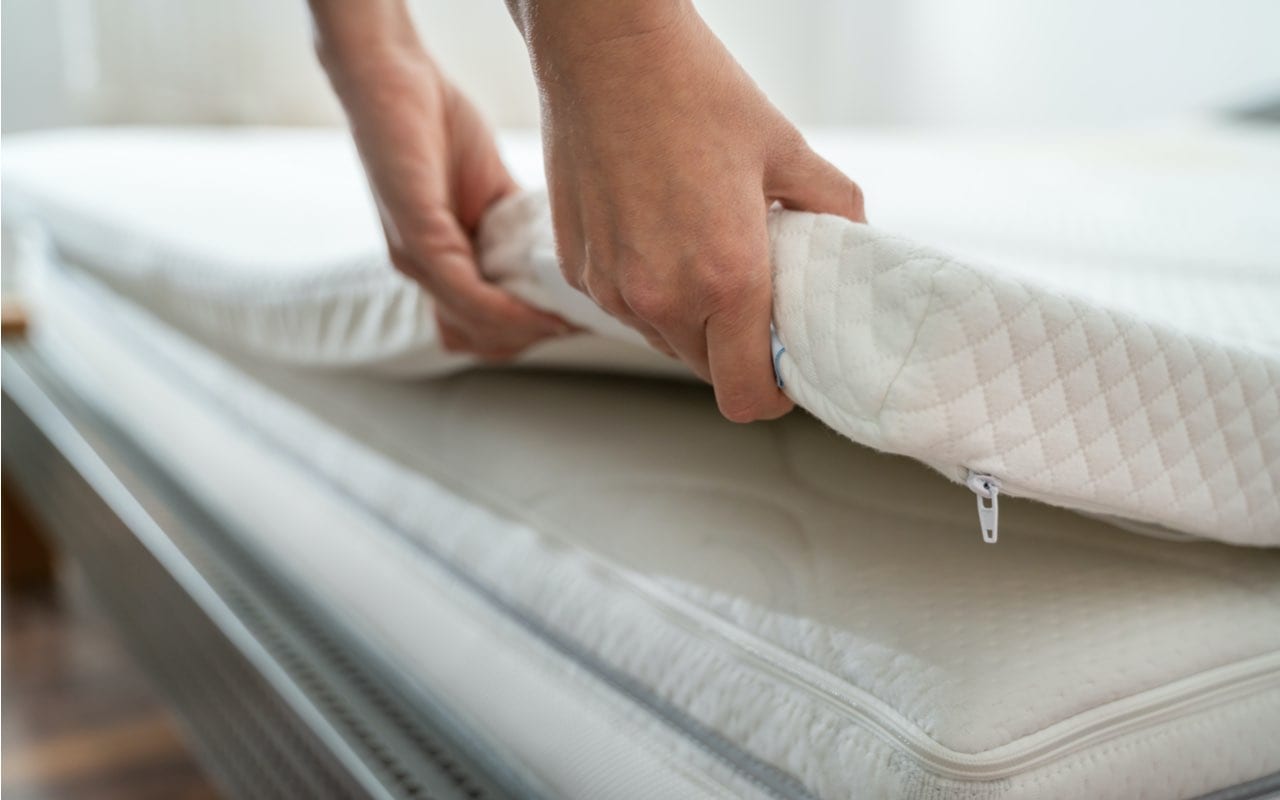

Bedroom Furniture
How To Fix Sagging Mattress In The Middle
Modified: January 9, 2024
Learn how to fix a sagging mattress in the middle with these simple and affordable bedroom furniture solutions. Sleep peacefully again without sinking in the center of your bed.
(Many of the links in this article redirect to a specific reviewed product. Your purchase of these products through affiliate links helps to generate commission for Storables.com, at no extra cost. Learn more)
Introduction
Welcome to our comprehensive guide on how to fix a sagging mattress in the middle. If you’ve ever experienced the discomfort of sinking into the middle of your mattress, you know how frustrating it can be. A sagging mattress not only affects the quality of your sleep but can also negatively impact your overall health and well-being. But fear not! In this article, we will explore the causes of mattress sagging in the middle and provide you with practical solutions to help restore your mattress’s support and comfort.
The middle of the mattress is the most prone to sagging due to the weight concentration of our bodies while we sleep. Over time, the materials in the mattress, such as springs, foam, or air chambers, may deteriorate and lose their ability to provide proper support. This can lead to sagging in the middle, resulting in an uneven sleep surface and an uncomfortable sleeping experience.
So, whether you have a memory foam, innerspring, hybrid, or air mattress, we’ve got you covered. We’ll walk you through the steps to detect sagging in your mattress, check for warranty coverage, reinforce the support system, utilize a mattress topper, rotate and flip the mattress, inflate a sagging air mattress, and when necessary, seek professional help. By the end of this guide, you’ll be equipped with the knowledge and tools to extend the life of your mattress and improve your sleep quality.
Remember, a mattress is an investment in your sleep, and taking care of it will ensure that you get the most out of your purchase. So, let’s dive in and discover how to fix a sagging mattress in the middle!
Key Takeaways:
- Restoring a sagging mattress in the middle is achievable through DIY methods like reinforcing the support system, using a mattress topper, and rotating/flipping the mattress. Regular maintenance and proper care are essential for preventing sagging issues.
- If DIY methods fail, seeking professional help from a mattress expert can provide tailored solutions. Checking for warranty coverage and investing in a high-quality mattress can prevent sagging and ensure long-term comfort and support.
Read more: How To Fix A Sagging Floor
Causes of Mattress Sagging in the Middle
There are several factors that can contribute to the sagging of a mattress in the middle. Understanding these causes can help you identify the root issue and determine the most effective solution. Here are some common culprits:
- Age and wear: Over time, mattresses naturally deteriorate due to continuous use. The materials inside, such as springs, foam, or air chambers, can lose their resilience and support, resulting in sagging in the middle.
- Poor mattress quality: Low-quality mattresses often lack the necessary structural integrity to withstand prolonged use. They may be more prone to sagging and may not provide adequate support for your body weight.
- Inadequate support system: The support system of a mattress, including the foundation or box spring, plays a crucial role in maintaining its shape and preventing sagging. If the support system is weak or damaged, it can lead to sagging, especially in the middle.
- Excessive weight: Mattresses have weight limits specified by the manufacturer. If the combined weight of the sleepers exceeds this limit, it can cause the mattress to sag, often in the middle where the weight concentration is highest.
- Sleeping in the same position: If you tend to sleep in the same position night after night, it can lead to uneven wear on the mattress. This can cause sagging, particularly in the middle, where your body exerts the most pressure.
- Inadequate mattress care: Failing to provide proper care and maintenance for your mattress can accelerate its wear and contribute to sagging. Lack of regular cleaning, failure to rotate or flip the mattress, and improper storage can all contribute to sagging in the middle.
Identifying the underlying cause of your mattress sagging is essential to determine the most suitable solution. In the following sections, we will explore various methods to fix a sagging mattress in the middle, ranging from DIY solutions to seeking professional assistance. By understanding the causes and taking appropriate action, you can extend the life of your mattress and enjoy restful nights of sleep once again.
Checking for Warranty Coverage
If you’re experiencing sagging in your mattress, the first step is to check if it is still under warranty. Most reputable mattress manufacturers offer warranties that cover defects and sagging beyond a certain threshold. Here’s how to determine if your mattress is still eligible for warranty coverage:
- Review your warranty terms: Locate your mattress warranty documentation and thoroughly read through the terms and conditions. Pay close attention to the sagging criteria and any requirements for filing a claim.
- Measure the depth of the sagging: Using a ruler or tape measure, measure the depth of the sagging in your mattress. Most warranties have a specified threshold for acceptable sagging, typically around 1.5 inches or more.
- Take photos: Document the sagging by taking clear photos of the mattress with the sagging area clearly visible. This will serve as evidence when filing a warranty claim.
- Contact the manufacturer: Reach out to the mattress manufacturer or retailer from whom you purchased the mattress. Provide them with all the relevant information, including the purchase date, warranty details, and photos of the sagging.
- File a warranty claim: Follow the instructions provided by the manufacturer to file a warranty claim. This may involve submitting your proof of purchase, warranty documentation, and evidence of the sagging.
- Wait for a response: The manufacturer will review your claim and determine if it meets their warranty criteria. They may request additional information or schedule an inspection to assess the sagging in person.
- Follow the manufacturer’s instructions: If your claim is approved, the manufacturer will guide you through the next steps, which may involve a replacement mattress, repair, or reimbursement for the sagging issue.
Keep in mind that warranty coverage varies between manufacturers, and each warranty has specific terms and conditions. Some warranties may only cover sagging that exceeds a certain depth, while others may have time limits or exclude certain types of damage. It’s essential to thoroughly understand your warranty coverage and follow the necessary steps for filing a claim.
If your mattress is no longer covered by a warranty or if the sagging is not significant enough to qualify, don’t worry. There are still effective DIY solutions and preventive measures that can help fix and prevent further sagging in the middle of your mattress, which we’ll explore in the following sections.
Reinforcing the Mattress Support System
If your mattress is sagging in the middle, one of the first steps to try is reinforcing the support system. The support system, which typically consists of a foundation or box spring, provides the base for your mattress and helps distribute weight evenly. Here are some methods to reinforce the mattress support system:
- Inspect the foundation: Start by examining the foundation or box spring for any signs of damage or wear. Look for broken slats, loose screws or bolts, or any other structural issues that may impact the support of your mattress.
- Tighten connections: If you notice any loose screws, bolts, or fasteners, tighten them to ensure that the support system is stable and secure.
- Add support slats: For platform bed frames or slat systems, consider adding extra support slats. This will help distribute the weight more evenly and provide additional support to the mattress, reducing sagging in the middle.
- Use plywood boards: Another option is to place a sturdy plywood board between the mattress and the foundation. Measure the dimensions of your mattress and cut the plywood to fit. This will provide a solid surface for the mattress to rest on, minimizing sagging.
- Upgrade to a stronger foundation: If your current foundation or box spring is worn out or insufficiently supportive, consider upgrading to a more robust one. Opt for a foundation with closer slat spacing or additional support beams to better distribute weight and reduce sagging.
- Consider a mattress support system: Utilize specialized mattress support systems such as mattress inserts or sagging mattress support boards. These products are designed to provide additional reinforcement to the sagging areas and restore the mattress’s support.
By reinforcing the mattress support system, you can provide better stability and enhance the overall support of your mattress. This can help alleviate the sagging in the middle and provide a more comfortable sleeping surface. However, if the sagging persists or if your mattress doesn’t have a traditional support system, there are other methods you can try, which we’ll explore in the following sections.
Using a Mattress Topper
If your mattress is sagging in the middle and you’re looking for a quick and affordable solution, using a mattress topper can be a game-changer. A mattress topper is a thick layer of padding that sits on top of your existing mattress, providing additional comfort and support. Here’s how using a mattress topper can help fix a sagging mattress in the middle:
- Choose the right type of topper: There are various types of mattress toppers available, including memory foam, latex, down feathers, or synthetic fills. Consider factors such as your comfort preference, desired level of support, and any allergies you may have when selecting a topper.
- Measure your mattress: Before purchasing a mattress topper, measure the dimensions of your mattress to ensure a proper fit. Toppers come in different sizes, such as twin, full, queen, or king, so choose the one that matches your mattress size.
- Place the topper on the mattress: Lay the mattress topper flat on your sagging mattress, ensuring that it covers the entire surface. Make sure the topper is positioned centrally, focusing on the middle area where the sagging is most prominent.
- Adjust the firmness: Depending on your comfort preference and the level of sagging in your mattress, you can choose a mattress topper with a different level of firmness. A firmer topper can provide additional support and help counteract the sagging in the middle.
- Consider a thicker topper: If your mattress has significant sagging, opting for a thicker mattress topper can help provide more cushioning and support. Thicker toppers are generally more effective in masking and reducing the sensation of sagging.
- Regularly rotate the topper: To ensure even wear and prevent the topper from conforming to the sagging area, rotate it periodically. This will help distribute the weight and pressure, prolonging the lifespan of both the topper and your mattress.
- Replace the topper as needed: Over time, the mattress topper may lose its effectiveness and become less supportive. If you notice that the sagging in your mattress persists even with the topper, it may be time to replace it with a new one.
A mattress topper can not only provide an extra layer of comfort but also help alleviate the sagging in the middle of your mattress. While it may not fix the underlying issue, it can significantly improve your sleep experience and extend the lifespan of your mattress. If using a mattress topper doesn’t fully resolve the sagging problem, there are other steps you can take, which we’ll explore in the following sections.
One tip for fixing a sagging mattress in the middle is to use a mattress topper or a piece of plywood to provide extra support and firmness to the sagging area.
Read more: How To Fix Sagging Bookshelves
Rotating and Flipping the Mattress
Rotating and flipping your mattress is a simple yet effective method to address sagging in the middle and promote even wear. Regularly changing the orientation of your mattress can help redistribute weight and pressure, reducing the likelihood of sagging. Here’s how you can rotate and flip your mattress:
- Check your mattress type: Not all mattresses can be flipped due to their construction. Memory foam mattresses, for example, typically have a specific sleeping surface and should only be rotated. Check the manufacturer’s instructions or labeling to determine if your mattress is flippable.
- Consult your mattress warranty: Some mattress warranties require regular rotation and flipping to maintain their coverage. Be sure to review the warranty terms and follow the guidelines provided to avoid voiding the warranty.
- Remove bedding and accessories: Strip off all the bedding and accessories, such as mattress protectors or toppers, before rotating or flipping the mattress. This will make the process easier and prevent any damage to the bedding or accessories.
- Rotate the mattress: If your mattress is not flippable, rotating it 180 degrees can help distribute the weight more evenly. For example, if the head of the mattress was previously facing north, rotate it so that the head is now facing south. This will reduce the pressure on the middle section and alleviate sagging.
- Flip the mattress (if applicable): If your mattress is flippable, carefully flip it over so that the opposite side is now facing up. This will ensure that both sides of the mattress receive equal wear and prevent excessive sagging in the middle.
- Use mattress handles (if available): Some mattresses come with handles on the sides for easy flipping and rotation. Utilize these handles to make the process safer and more manageable.
- Repeat the process regularly: To maintain the integrity of your mattress and prevent sagging, aim to rotate and flip it every six months. This will ensure that any initial signs of sagging are addressed promptly and that the mattress wears evenly over time.
By regularly rotating and flipping your mattress, you can minimize the impact of sagging in the middle. This simple maintenance practice not only helps to extend the lifespan of your mattress but also enhances your comfort and sleep quality. If rotating and flipping the mattress doesn’t fully resolve the sagging issue, don’t worry. There are other methods you can explore, as we’ll discuss in the following sections.
Reinflating a Sagging Air Mattress
If you’re dealing with a sagging air mattress, the solution may be as simple as reinflating it properly. Air mattresses can lose air over time, leading to sagging and discomfort during sleep. Here’s a step-by-step guide on how to reinflate your sagging air mattress:
- Locate the air valve: Identify the air valve on your air mattress. It is usually located on the side or bottom of the mattress.
- Ensure the valve is closed: Make sure the air valve is tightly closed. If it is left open, the mattress will not hold the air properly, leading to sagging.
- Find the appropriate inflation method: Depending on the air mattress you have, there are different methods to inflate it. It may involve using a manual hand or foot pump, an electric pump, or even an air compressor. Choose the method that suits your needs and equipment availability.
- Start inflating the mattress: Follow the instructions provided with your specific inflating device. Attach the pump or adapter to the air valve and begin inflating the mattress. Be sure to inflate it to the recommended firmness or desired level of comfort.
- Monitor the inflation level: As you inflate the mattress, periodically check its firmness. Stop inflating once it reaches the desired level, being careful not to overinflate as it could lead to discomfort or damage the mattress.
- Test the mattress: Once fully inflated, lie down on the mattress and distribute your weight evenly. Check for any signs of sagging or unevenness. If there are still areas of sagging, or if the mattress deflates quickly, there may be a leak that needs to be addressed.
- Locate and fix leaks (if applicable): If you notice a leak in your air mattress, use soapy water to identify the source. Apply the soapy water to the mattress and look for bubbles forming at certain areas. Once you locate the leak, patch it using a repair kit specifically designed for air mattresses.
- Reinforce the mattress with additional support: If you experience recurring sagging in your air mattress, consider placing a firm base or padding underneath it. This will provide extra support and help prevent sagging in the middle.
Reinflating your air mattress correctly can restore its shape and support, eliminating the sagging in the middle. If the sagging persists or if your air mattress has structural issues that cannot be fixed, it may be time to consider other options, which we’ll explore in the next sections.
Seeking Professional Help
If you’ve tried DIY methods and the sagging in your mattress still persists, it may be time to seek professional help. A mattress professional or a qualified technician can assess the condition of your mattress and provide expert guidance on potential solutions. Here are some steps to follow when seeking professional assistance:
- Research reputable mattress professionals: Look for reputable mattress companies or retailers that offer professional mattress services. Read reviews, check their certifications, and verify their expertise in mattress repair or replacement.
- Schedule a mattress inspection: Contact the mattress professional and arrange for an inspection of your sagging mattress. They will thoroughly examine your mattress to determine the underlying cause of the sagging and recommend appropriate solutions.
- Discuss warranty coverage (if applicable): If your mattress is still under warranty, discuss the warranty terms with the professional. They can guide you through the process of filing a warranty claim and help ensure that you receive the appropriate repairs or replacement.
- Consider a mattress repair or replacement: Based on the assessment of your mattress, the professional may recommend repair options, such as replacing damaged components or adding additional support. In severe cases of sagging or irreversible damage, they may suggest a mattress replacement.
- Get a cost estimate: Request a cost estimate for the recommended repairs or replacement. Compare prices from different professionals or retailers to ensure you’re getting a fair deal.
- Weigh the options: Consider the cost of repairs or replacement against the age, condition, and overall quality of your mattress. If the suggested repairs are extensive and costly, it may be more practical to invest in a new mattress instead.
- Make an informed decision: Based on the professional’s assessment and your own considerations, make an informed decision regarding the next steps for your sagging mattress. Whether you choose to repair, replace, or explore alternative options, ensure that it aligns with your budget and sleep needs.
Seeking professional help can provide expert insights and solutions for your sagging mattress. They have the knowledge and experience to accurately diagnose the issue and guide you towards the best course of action. Keep in mind that professional services may come with additional costs, but it can be a worthwhile investment if it prolongs the lifespan of your mattress and improves your sleep quality.
Remember, prevention is key in maintaining a mattress’s longevity. Implementing regular maintenance practices and proper care can help prevent or minimize sagging issues in the future. If you do end up purchasing a new mattress, it’s beneficial to research reputable brands known for their durability and support to avoid sagging problems in the long run.
Conclusion
Dealing with a sagging mattress in the middle can be a frustrating experience. However, there are several effective methods you can employ to restore support, improve comfort, and prolong the life of your mattress. Whether your mattress is memory foam, innerspring, hybrid, or an air mattress, there is a solution for you.
From checking for warranty coverage and reinforcing the mattress support system to utilizing a mattress topper and rotating/flipping the mattress, these DIY approaches can often alleviate the sagging. If needed, seeking professional help from a mattress expert can provide further insight and guidance tailored to your specific situation.
Remember, regular maintenance and proper mattress care are crucial in preventing sagging and ensuring the longevity of your mattress. Rotate and flip your mattress regularly, follow manufacturer recommendations, and consider investing in a high-quality mattress that suits your needs and body type.
A sagging mattress may compromise your sleep quality and overall comfort, but by utilizing the solutions described in this guide, you can address the issue and restore your mattress to its optimal condition. Don’t let a sagging mattress disrupt your sleep any longer – take action today and enjoy a restful night’s sleep on a properly supported mattress.
Frequently Asked Questions about How To Fix Sagging Mattress In The Middle
Was this page helpful?
At Storables.com, we guarantee accurate and reliable information. Our content, validated by Expert Board Contributors, is crafted following stringent Editorial Policies. We're committed to providing you with well-researched, expert-backed insights for all your informational needs.

